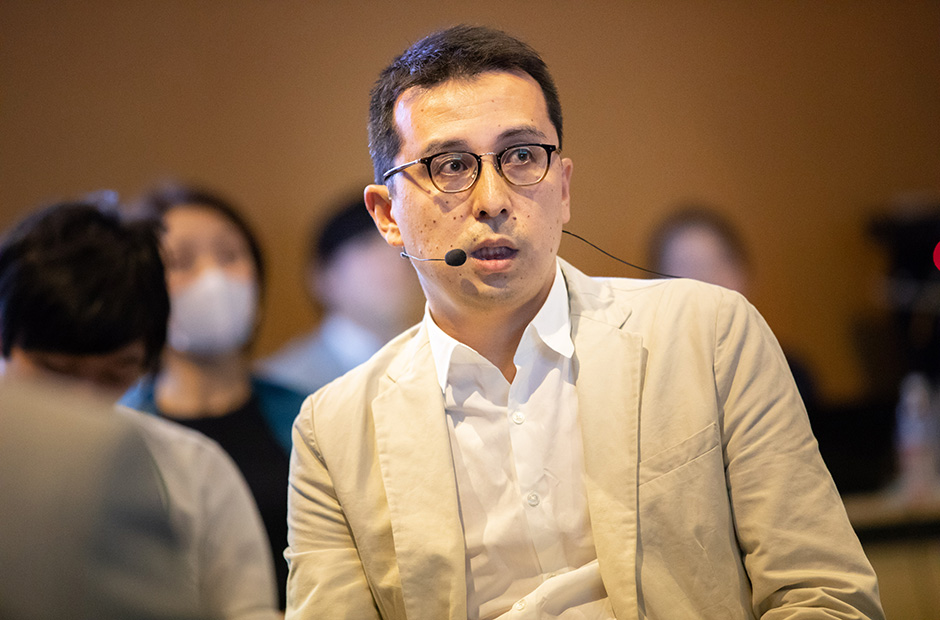Professor, Teikyo University /
Executive Director, The Mori Memorial Foundation
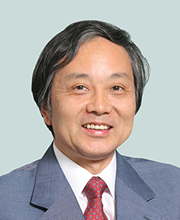
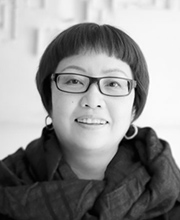
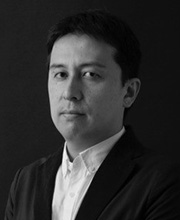
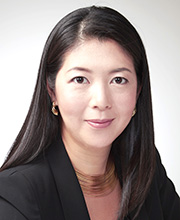
In Session 1 we examined Tokyo’s identity from an architectural and urban history perspective and considered what kind of city Tokyo should be in the future by reflecting on its transformation from the Edo period. In today’s second session we have been joined by architects and a lighting designer to consider a flexible concept for identity inheritance by drawing inspiration from materials and design.
When I was designing the Hoshinoya Karuizawa resort village, I received a request from the client to refrain from incorporating Western design influences. Without relying on Western culture, I maintained a Japanese aesthetic in my designs, and on countryside scenery that could be found anywhere, I imparted a tinge of individuality with the buildings. Even when thinking about how guests could relax inside their rooms, we designed pieces of furniture to be used on tatami mats so guests could more comfortably relax in Japanese style, as opposed to the Western style of sitting on a sofa. While Japanese-style rooms may struggle to survive in the future, I certainly think we can preserve the practice of sitting on tatami or at least using tatami as a material.
At Hoshinoya Fuji, we devised ways to ensure that the view from each guest room was unobstructed by sinking the height of the balconies. I think the meticulous attention for detail regarding the height of the viewing location is an extension of Japanese culture, which has always taken into consideration at what height something should be viewed. A classic example of this would be the angle and height from which a Japanese garden is viewed. Also, at Hoshinoya Tokyo we created an elongated tube-shaped open-air bath to represent the sensitivity Japanese people have for sound, including the sound of insects, something considered to be idyllic in Japan but thought of as grating overseas. With the hot spring facilities on the top floor of the hotel, the guests get to hear a variety of noises they would usually only hear on the ground become distinctive sounds drifting up from the city below. This is something you can only experience in the city.
One reason why Japanese technology is in a state of gradual decline these days is that there is not enough work to sustain the skills of craftsmen. Unless designers themselves study what kind of techniques exist and make a conscious effort to employ them, the techniques will be difficult to retain. Instead of just buying furniture, I place custom-made orders for pieces that guarantee height perspective or pieces that fit perfectly with the relaxing atmosphere of the place in question. With stones and walls too, I design them in a way that clearly shows off my use of manual techniques. With craftsmen only continuing to get older, we face the challenge of instilling in the next generation a keen eye for accumulating techniques and materials.
That said, it is not easy to communicate the essence of things simply by going through the motions. I think it is crucial that we impart knowledge through hands-on experiences and teach the next generation the intangible concepts of design. At Hoshinoya Tokyo, which incorporates a Japanese inn theme into its design, I proposed that guests take off their shoes. Simply creating an entrance area like those at typical hot spring inns would probably not have had much of an impression on the guests, so we instead designed the entire first floor to be the entrance area so when guests would come back down from their rooms, their shoes would be laid out ready to be put on. In this way, while giving an establishment a Japanese feel, we are constantly aware of setting it apart from others and expressing individuality.
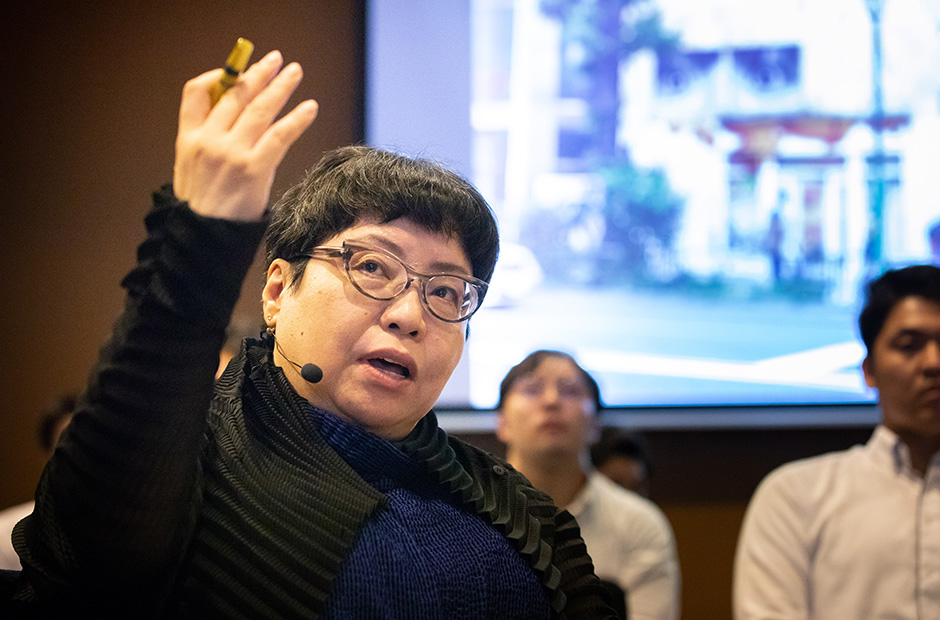
he New Material Research Laboratory that I founded with contemporary artist Hiroshi Sugimoto in 2008 is working on actively using old materials and techniques and reinventing them based on the ideology that “traditional materials are the newest.” We emphasize the importance of time made visible by materials, with a particular focus on stone and wood. Today I would like to share with you some of our ideas, which can be visualized in how materials were handled in our past work.
Firstly, the idea of “timeless (beyong time).” Given our unbroken and ongoing human behavior since the dawn of civilization, I think we should once again question the concept of time and the Westernized values that have emerged over the last 100 years or so. Furthermore, we are constantly thinking about what kind of experiences and emotions our architecture can evoke—things that we like to refer to as being “priceless.” In addition, we are always aware of the “social effects” of our designs, which is why we take housing details into account and consider things on an urban scale.
After taking on more projects overseas, I get the sense that foreign people have an admiration for the spiritual side of Japan that is ingrained in all Japanese, like the tea ceremony, noh theater, or Shinto, rather than the obvious Japanese cultural tastes that are often embraced by foreign people, such as sushi, kabuki, geisha, or Fujiyama. We are currently working on a residential project in Manhattan. The client has a keen interest in the old materials and spiritual nature of Japan and would therefore like us to incorporate modern Japanese sensibilities into our designs instead of the stereotypical temples, shrines, tea rooms, or Kyoto-style tea pavilions. In order to provide the client with a once-in-a-lifetime opportunity to interact with the materials we were using, we shared with them the marvel of the very moment when you see the inside of a choice wood as it is cut open with a machine. We also showed our client how the sections of valuable lumber cut open can repel water without the need for any coating if it is planed by a highly skilled craftsman.
We are reexamining whether the measures of value formed over the last 100 years will be sustainable in the future and whether they are truly appropriate (timeless); considering the experiences that money cannot buy and how they can elicit emotions (priceless); and just as we are doing today considering the finer details of architecture, and at the same time, society, and cities (social effect). We aim to continue examining these ideas with the goal of making Tokyo a more attractive city.
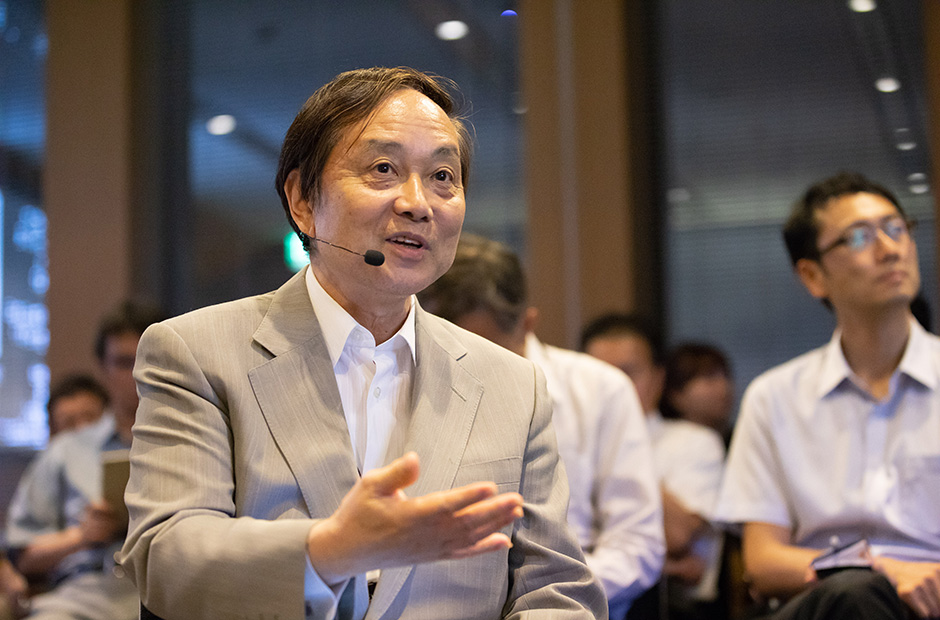
A lighting designer is an artist that paints pictures on a nighttime canvas using light for pigment. That said, this occupation only started to be recognized in Japan from around the 1980s.
Reflecting on the past, France in the Middle Ages suggests there were three factors in the development of lighting in urban settings: order, identity, and security. The first factor, order, refers to social order. An example from the Middle Ages would be a light on top of the king’s castle. In the city, lighting spread in the form of spatial order and eventually came to represent hierarchy. The second factor, identity, refers to lights being used as landmarks to light up the most remarkable places in town or to make something stand out. This continued to develop and led to the idea of identity creation, much like how we light up important landmarks today. The third factor, security, was particularly important in the Middle Ages because lights made the dangerous nighttime streets safer by providing visibility.
Issues with Tokyo’s night view include (1) no identity, (2) inconsistent brightness and illumination, (3) misunderstanding about lighting fixtures, (4) confusion of brightness and glare, (5) insufficient energy-saving awareness, (6) lack of hierarchy, (7) vague neighborhood characteristics, and (8) no reflection of Japanese technology.
When we talk about lighting up the city, we usually mean the shining of lights onto monuments such as temples or municipal offices, but we need to think differently and illuminate more than just monuments. We should plan to include road lighting and use lines and wide-area lighting rather than just some points. And in recent times we have seen an increase in so-called light festivals around the world. Moreover, new places are being created because they leverage the attraction of an illuminated site. For example, the lighting inside Les Ombres restaurant on the rooftop of the Musée du quai Branly – Jacques Chirac, a museum in Paris, is so dark you can hardly see what you are eating. This is because the concept of the restaurant is based on the idea of viewing the beauty of the Eiffel Tower at night. The name of the restaurant in English means “the shadows,” which furthers the idea of the customer dining in the dark while the tower sparkles in the light.
Another line of thinking that has emerged in recent years is the idea of a masterplan to leave some areas in darkness. Masterplans are also being drawn up for entire towns to analyze what impact improvements to lighting in public spaces like riverbanks and plazas have on activity and atmosphere. The results are reflected in actual projects to ultimately transform the town into the vision of the masterplan. Global associations also exist. Their members hail from towns that are keen to improve lighting and meet together in different locations around the world to learn about lighting.
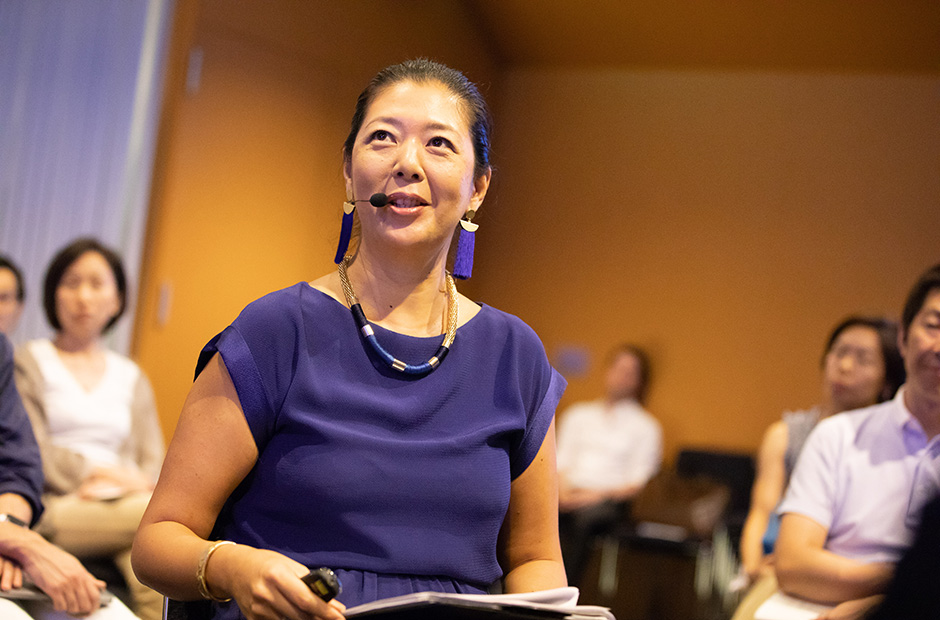
Let us now discuss today’s topic of how to strengthen Tokyo’s identity by leveraging materials and design.
Given that half of one day is shrouded in darkness, it is important that we create an identity for the nighttime hours. People in Singapore, for example, never used to go to alfresco cafés at night around 20 years ago, but the development of the riverside precincts attracted cafés to the area and are really popular now, especially with the illumination of the elegant colonial-era buildings. People’s mentality changed, so they started going out at night. Tourists also visit those areas, thus generating synergy effects. What we need first is a trigger to set something in motion, which then leads to the next thing.
When listening to the presentations about materials, I was struck by the depth of Japanese culture. How should that be reflected in urban planning up ahead?
Although I am yet to form my own opinions on how it should be reflected in the city, I think the keyword here is the Japanese psyche. Even though Tokyo’s landscape is that of a sprawling city, there is tranquility within it. My feeling is that the long-held sensibilities of the Japanese people are key to this.
Japanese people should be a bit more affirmative about their own culture. In some areas of society Japanese culture was eroded during the Meiji Restoration and after World War II, when Western culture was considered more advanced. I think we should reexamine our own culture and look at ways to stage its revival. While architects alone do not have the capacity to create culture, I think distinctive characteristics in each area, rather than homogenous features, can be generated by developers if they adopt a strategic approach to the future of Tokyo instead of just focusing on economic efficiencies.
Traditionally, I think Japanese people have a culture of appreciating shadows. Perhaps the rejuvenation of light and shadows will bring Japan’s uniqueness and peculiarities to Tokyo in the future?
During Japan’s post-war recovery, there was a perception that bright was somehow better. It would be nice if the Japanese people can regain their original sensibilities and sensitivity, especially their sense of admiration and subtle appreciation for shadows.
Given that we have seen a switch in culture from fluorescent lighting to LEDs, I think there is a chance we can make a return to that kind of feeling. What do you think?
As LEDs are a point-light source, we cannot create a linear-light source unless we join many of them together. Clever use of this method can create contrast between bright areas and shadows, as well as the beauty of contrast and the graded subtleties in between.
Specifically, what aspects of Japanese mentality do you think are admired in the West?
In the West, many people see shiny and lavish materials like marble as being expensive, but Japanese people prefer matt textures. It is difficult to conceive non-shiny materials as being valuable items. The ability to read deeply into the background of a material is embodied in the sensitivities of the Japanese people, in my opinion.
So how should we think about materials in an architectural sense on an urban scale?
The approach taken in cities like Paris and London is unlikely to work in Tokyo. Just as Professor Ito said during Session 1, I think the idea of the city transforming into a series of islands stems from Japanese culture. If Tokyo does have a mix of different areas where certain factors function, like economy and culture, to serve as the city’s selling points, then we must cherish that. Tokyo will end up like any other city in Asia if everything is made the same. On the other hand, for this very reason, we should probably carefully examine this urban mix and work on creating area-based characteristics that also involve the use of certain materials. Different age groups that think differently have contributed to the creation of areas like Harajuku, Akihabara, and Shinjuku. The interesting emergence of this trend makes Tokyo what it is today.
People are saying that Japonism is making a comeback for the first time in 100 years, but what is it exactly that foreign people are attracted to in Tokyo and Japan?
I think it is the nature of how things are mixed, the mix of precincts, and the mix of history. Foreign people often say that seeing an old temple wedged in between a forest of high-rise buildings is so very Japanese. I too think this contrast is very appealing and is something we must treasure. It is important that we continue to allow things from the past to endure in the present by cleverly incorporating them into urban development.
Alleyways still remain in Tokyo today but they also present challenges because some people see them as a fire danger given their narrow access. At the same time however, culture is born at the human scale in these places.
High-rise buildings continue to go up within the Yamanote Line but I would like to keep lower buildings in this area. Moving away from the land because of high-rise residential towers goes against Japanese culture, I feel. Even if some areas have tall buildings, other areas should be left at a lower height. I think in this way small communities can remain and preserve the alleyways and other places where humans interact.
When thinking about the unique culture of Tokyo, I think alleyways certainly come to mind.
If architects too can skillfully incorporate alleyways into high-rise precincts, then that would probably accomplish a new style of high-rise development unique to Japan.
Lighting has a big role to play in the creation of a city’s identity. In what way, and where exactly, should Tokyo harness the power of lighting?
How we perceive public places is key. Western thinking about public places runs something akin to “because it belongs to everyone, it also belongs to me,” as opposed to the idea that it is just a place outside of the home. Accordingly, everyone must carefully discuss how public places are utilized. I sense that in Japan people are of the opinion that “public places have nothing to do with my home,” but it would be interesting if we could change this consciousness and come up with a way to share public spaces like plazas by harnessing the power of light.
Roads are also key. Inner-city areas appear bright, but in many places, you only feel this because of the glaring street lights. In contrast, residential areas are dark and there are still some areas where only fluorescent lamps are on the telegraph poles. I think beautifully lighting up roadside areas will change how we think about public places and lead to a sense of connection.
How we view public spaces is a compelling topic, I think. In Session 3, our discussions will focus on considering Tokyo’s identity from the perspective of urban precinct development.
